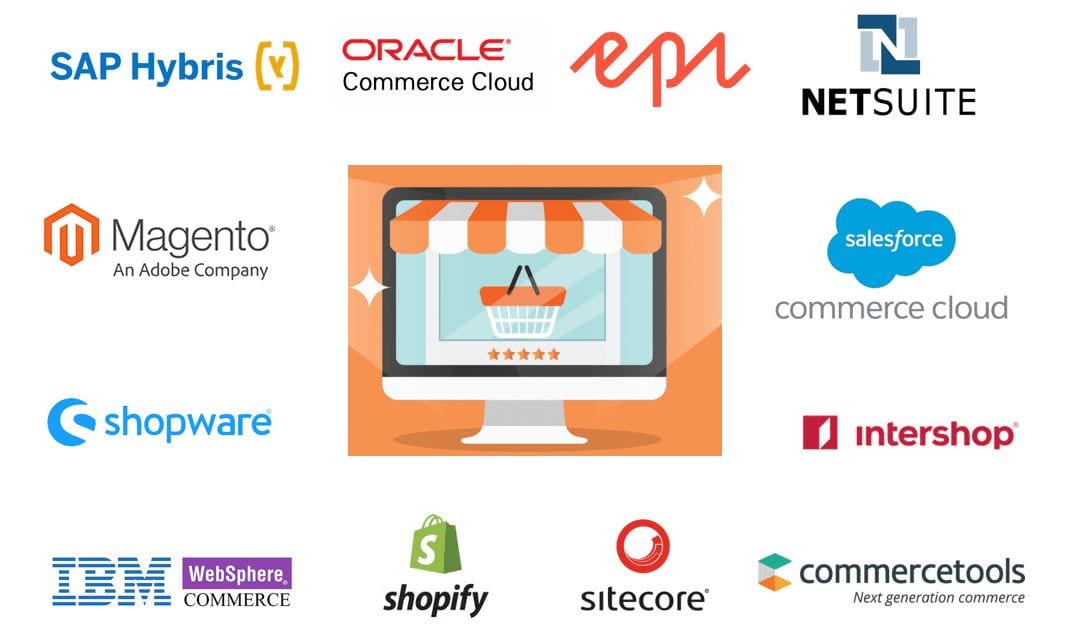When migrating to a new Ecommerce platform you don't take it overnight. Because the step is too drastic for that. But don't be put off. After all: you undoubtedly have good reasons to think about the pros and cons of replatforming. Either your existing solution has not grown sufficiently with your business, or the costs are skyrocketing. These are important aspects of your next choice. No doubt you've already studied a lot of replatforming tips. Here is the most relevant one: compare the existing ones Ecommerce platforms, make a shortlist and compare costs and performance per platform.
As said: replatforming is an important step. It feels like you are going to live in a new house. Everyone has to find their way and get used to it. Existing routines change, systems need to be interconnected. But that is no reason for delay. Because the market and your customers don't wait. If your current Ecommerce platform no longer meets your requirements, chances are that your business will not meet the requirements of the market and consumer. And with that, the chance that you will miss out on customers and turnover is considerable. Because the competition is fierce and consumers are ruthless if you don't give them the experience they expect.
Replatforming Tips
So, the first of our replatforming tips is, don't delay your decision any longer. Formulate a clear package of requirements and make a step-by-step plan with a clear timeline. Involve as many people in your organization as possible, who can add value to the replatforming project from their role. The sooner the better. Because support and knowing what is happening is essential. Allow employees to watch, count and participate in the decision-making phase during the comparison phase.
Since you are looking for new Ecommerce software, you have the necessary experience in Ecommerce. So you know well how to map out which characteristics and functions determine success for your current business and especially what gaps and stumbling blocks are at the moment for growth. And to stay ahead of the competition. This gives you a good starting point for comparing the wide range. Tip 2: make a detailed and specified schedule of requirements. That's your guide in comparing the plethora of solutions the market offers. And your blueprint for the final selection.
Balance in costs and performance
While browsing through the offer, you will soon discover that many platforms are hardly inferior to each other in terms of the options and functionalities they offer. It can be as 'bare' or as extensive as you like. However, the more advanced a platform, the higher the purchase price or the license costs. And the periodically recurring management and maintenance costs are often higher. You can take this into account in advance. But don't let the cost aspect dominate your decision-making process. Rather, look for the ultimate balance in costs and performance.
So are you with open source platforms are sometimes the most advantageous. And for many not too complicated web shops, this can be a great solution. Open source Ecommerce software - from both the well-known and less well-known providers - has grown rapidly in recent years as more and more small companies are turning to Ecommerce. When comparing platforms, take a critical look at extra costs, for extensions, for example, or for adjusting the atmosphere and style of your webshop. And try to calculate the costs associated with the deployment of your people or hiring external parties. And very important, the components from the “community” must also be maintained, even if the developer stops working ...
Cheap, expensive or in between
The opposite of an open source solution is the on premisesolution. With this you buy custom work, which is often a guarantee of the possibility of distinctive character. In the offer you will encounter all renowned tech names, but also new players. Your software runs on your own servers or in your own “public cloud”, usually within a service contract. Take into account the additional costs for security and watertight backup procedures and for the IT expertise that you must either have in-house or be able to hire at any time.
Then there is the option in between open source and on premise in is: the SaaS-solution. Software as a Service (or software on demand) is based on the rental / lease and service principle, in which you have to at least consider aspects such as maintenance, security, updates and system innovations. Since your software runs on a remote server, the chance of downtime is minimal, you can (sometimes) scale up and down at any time, and the risk of hacks or ransomeware is relatively small.
Take advantage of free replatforming tips
In conclusion, you can say that a open source platform does not require too large an investment, but that you can run up against limits for optimal performance. Moreover, some knowledge of and skill in IT is almost indispensable. On the other hand, there is the substantial investment in a on premise platform. If you choose this, IT knowledge is a must and you have to be absolutely sure of the stability of your servers and infrastructure. Do you choose a platform that runs according to the SaaSin principle, somewhat comparable to cloud software, you usually do not have to make a large investment in one go. You can quickly see what your periodic costs are. Moreover, the service is included.
Within these three options you will of course find major differences in functionalities. Think of SEO, ordering and payment functions, data collection and analysis, creation of product information, marketing automation, and so on. The following applies: compare them with your program of requirements. And when we talk about performance, it is mainly about speed, availability and the User Experience of your website. The consumer has high expectations. And one of those expectations is that you are accessible 24/7 and that your website loads very quickly. Slowness and downtime cost customers and turnover. That's why another tip: take a good look at how the various platforms score on this and read as many reviews as possible.
Finally, to wrap up the replatforming tips, don't throw out your old shoes before you get new ones. In other words: let your existing platform run for a while. Make sure that the supplier of your choice takes this into account during the implementation. Keep control in your own hands. To compare is to know. Good luck! And if you need more replatforming tips for a successful migration, state our team waiting for you.













